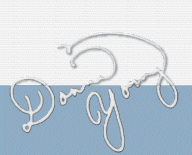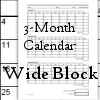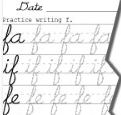 Streams of Civilization Volume One
Streams of Civilization Volume One
ISBN 0-89051-017-2
410 Pages
After an eight page introduction, Streams of Civilization starts at the beginning. The discussions are about the two views of how everything started. Missing links and dating methods are examined as well as Noah's ark, uniformitarianism, and catastrophism. Streams of Civilization Volume One continues through time until 1600 A.D.
There are 17 chapters in the book as well as an 8 page introduction. Streams of Civilization Volume one has a teacher's manual, test packet and a timeline book. These are all optional, but available if you want them.
Streams of Civilization is often used as the main book of a world history study. there is more about that below in scheduling.
I am asked often:
 Do I need the teacher's book?
Do I need the teacher's book?
My reply is something like this:
I have the teacher's book and I did not use it. Below is a basic list of what is in the teacher's book and I hope the list helps you decide.
This is how the teacher's book is laid out for each chapter:
- There is an introduction paragraph.
- Then the 'big ideas' and major concepts are listed.
- Next a paragraph discussing (not defining or listing) the vocabulary.
- Next several paragraphs discussing special projects
- After that a paragraph discussing but not outlining a lesson plan.
- What follows would be the rough plan:
- It lists objectives, procedure and suggested teaching strategies. After that there is a
- paragraph with advice about assessment and evaluation.
- Finally a paragraph about the upcoming material ends the teacher guide for each chapter.
Scheduling
As far as scheduling the Streams of Civilization book, take one week or less for the introduction and two weeks for each chapter to complete it in about 35 weeks or use one of the schedules that are provided at this website. To be quite honest your high school age child could read this entire book in one semester, so as you can see there is plenty of room for supplemental materials. That said, I want to add that there are a lot of ways to use this book. How you use the book and what you add to the class is up to you and your child.
Reading a few chapters and then taking a supplemental break is one way to use this book. The schedule that I am making for you is designed for that type of study.
The Schedules
My two schedules are based on the planning notes. There are no page numbers on the schedules. Choose the schedule based on how many pages you think your child can read. The slower paced schedule allows for more days per chapter than the faster paced schedule.
- Schedule One - slower reading pace
 Printable- Acrobat format
Printable- Acrobat format - Schedule Two - faster reading pace
 Printable- Acrobat format
Printable- Acrobat format
Planning Notes
Print a copy of the planning notes to help you with your scheduling.
Note Taking Form
Students should learn to take notes. My highschooler is required to take notes on his daily reading in history. He then uses the notes for discussion purposes and to work on his timeline book. You do not have to make your children do this, but if you do, there is a form below that they can use to get started. If they already know how to take notes, then they should do so without the form and use a notebook.
 Notes Form |
Notes Form |
 Notes Continued Form
[print on other side of paper]
Notes Continued Form
[print on other side of paper]- "How to Take Notes" Resources: (pages open in new window)
- http://www.earlham.edu/~peters/courses/notes.htm(Philosophical Texts or difficult books)
- http://www.utoronto.ca/writing/notes.html (research reading)
- http://www.factmonster.com/homework/studyskills2.html (bottom half of page)
- http://sbc.edu/academic-resource-center/note-taking-skills(From Lectures)
Supplemental Break List
The topics listed below are only suggestions. The activity should be relevant to the chapters that you have studied.- Choose a project from the Streams of Civilization book
- Read a historical fiction book
- Read a fact book or parts of one
- Research a historical event and write an essay or report
- Work on timeline book or chart
- Make maps that are either flat or 3-D
- Learn a handy-craft that was done during the time period
- Illustrate a historical event (painting, drawing, sculpture, etc)
- Watch videos that feature the places
- Listen to music and study the art of the time period
If you would like the supplemental breaks to occur more often and for shorter periods of time, then I recommend that you look at Reading Schedule For Streams of Civilization
Bookmarks
These bookmarks can be useful for your children if they like to self study or go at their own pace. Children that follow a schedule may also like the bookmarks.
What is on the bookmarks:
The vocabulary words - As your child reads the book, he may wish to note on the bookmark the page numbers of the vocabulary definition.
Checklist - The sections of each chapter are listed on the
bookmark. Your child can check the sections as he does them. *NOTE
Sometimes two or more sections can be done in one day!
Notes and Quotes - Your child may use this part to make record of
the notable parts of the chapter. The notable parts are the parts that the
child finds especially interesting. This part of the bookmark could also
be used for making brief notes about the important parts of the text -- as
a study aid.
Instructions: Print the bookmarks on card stock. There are 4 bookmarks on each printable (except for chapter 17 which has only one) and that means that you have a choice of:
- cutting the bookmarks in groups of two and gluing two chapters back to back
- cutting each one individually and if you do, consider printing a back on the cards before cutting to have more space for Notes and Quotes
Bookmarks
 Bookmark Back
Bookmark Back
The bookmark back simply prints a dashed horizontal rule.
Print it on the backs of the bookmarks before cutting the bookmarks. The back's
purpose is to give more space for Notes and Quotes.
The bookmarks are very close to the edge. If your printer cuts them
off, try the settings under Page Handling (in red in the image below).
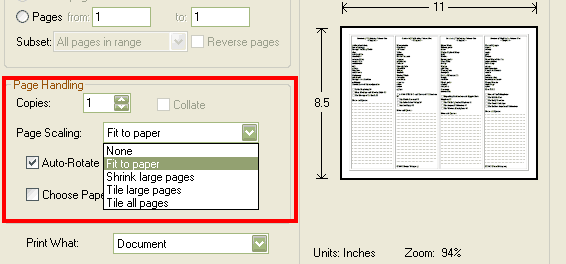
Terms used on this page:
Supplemental Break: Pausing for a time from a main book and using other books or using other methods to learn in more depth the material that is being covered in the main book. Reading other books, doing hands-on projects, and field trips are common supplemental breaks.
Main Book: This is the book that is primarily used and referred to for the study of a subject such as history, science, art, literature, or English. This is sometimes call the spine.

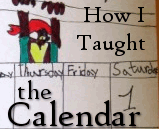

 A Calendar Index!
A Calendar Index!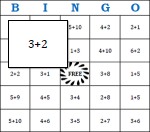 Printable Math Bingo!
Printable Math Bingo!